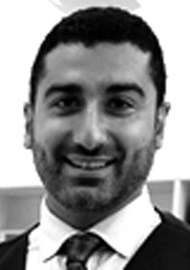
Oculomics and Big Data changes the game for medical ophthalmologists, and here's why.
On 13 September, a paper entitled A foundation model for generalizable disease detection from retinal images came out in Nature. Perhaps the most swiftly shared ophthalmology-related academic paper on social media, this has seen phenomenal traction.
Using self-supervised learning and transformer models, feeding off ~1.6 million retinal images, RETFound is a general-purpose model that can be efficiently adapted to detect both eye diseases and predict systemic conditions.
The GitHub repo with code implemented by Yukun Zhou, based on PyTorch, is available here
Needless to say, I am very excited about the future being shaped by friends and former colleagues, including Siegfried Wagner, Pearse Keane, Alastair Denniston and folk in the UK Biobank Eye and Vision Consortium.

What is Oculomics?
Imagine discovering hitherto unknown features in the eye which can shed light on full-body diseases?
Oculomics employs advanced data analytics and technologies to uncover connections, and Big Data provides the substrate.
With the collection and integration of vast amounts of data from various sources (EHRs, ophthalmic imaging, genetic data, lifestyle info) we can aggregate and harmonise these to provide an integrative view of a patient's eye and systemic condition.
Deep learning then allows us to understand complex relationships, opening new and unforeseen avenues for diagnosis and risk stratification, together with population-level studies and personalised medicine.
Implemented in under-resourced settings, this opens Pandora's Box for new ways of screening, predictive modelling and uncovering clues about systemic health conditions that might otherwise go unnoticed.
What is Medical Ophthalmology (aka Ophthalmic Medicine)?
Medical ophthalmologists (or ophthalmic physicians) are doctors who diagnose and treat medical eye conditions which are related to systemic diseases. Treatment incorporates the overall health and wellbeing of the patient and a focus in managing drivers for disease. It's also all about collaboration.
Oculomics X Medical Ophthalmology
Last year (2022), I asked Prof Alastair Denniston to brief the community at our annual Medical Ophthalmology Society UK (MOSUK) meeting. He gave an outstanding lecture entitled Oculomics: How Medical Ophthalmologists will have all the answers, covering how we can help shape, and interpret, the future.
“The eyes are the window to your soul.”
The human eye has long been considered a window into the soul, and now can be a looking glass into much else besides. For example, an early warning system for diabetes and its associated complications. A bellwether for hypertension, atherosclerosis, other heart-related conditions by analysing the health of the retinal vessels and associated biomarkers.
It can also shed light on links and biomarker discovery between eye health and neurodegenerative diseases like Alzheimer's and Parkinson's Disease...
What about specific eye imaging signatures or biomarkers of immune system activity – to help in the screening, diagnosis and management of autoimmune disease? The list of diseases which may have ocular biomarkers could be endless.

Excitement
RETFound demonstrates the potential of self-supervised foundation models to enable diverse clinical AI applications from medical imaging data with reduced need for expert labeling.
How?
RETFound is pretrained with a masked autoencoder to learn powerful generalisable representations from retinal images. Then this is adapted to downstream tasks with fewer labeled data. This label-efficient platform unlocks use of AI in rare diseases, and 10x less training data is needed. It also spans ages and ethnicities – important as these affect ophthalmic images.
This collaboration with Google DeepMind, Google Health relies on cloud-based data pipeline INSIGHT Health Data Research Hub, the world's largest ophthalmic imaging bioresource.
An exciting future
I hope that this innovation will transform our approach to systemic health, and by analysing eyes we can provide early diagnosis, monitoring of disease progression and obtain insights into how patients are responding to therapies. I would like oculomics to join advanced blood testing as a key window into overall health and disease and allow us to detect body diseases at their earliest stages, when interventions are most effective.
This approach could lead to improved patient outcomes, reduced healthcare costs and shift towards more proactive and personalised medicine. And it can offer patients a higher quality of life.
Are we at the Oppenheimer Moment for AI and for oculomics?







